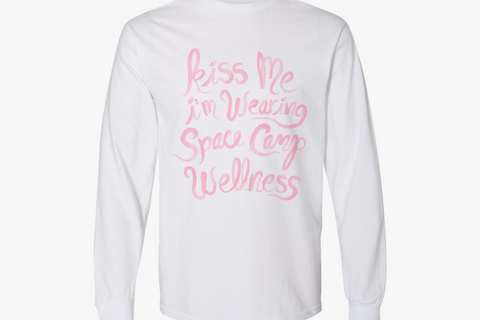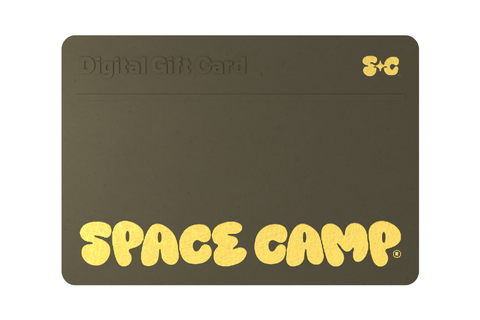Lip balm is one of those small but mighty products that almost everyone uses, yet few people think much about. Choosing the right lip balm can make a big difference in how your lips feel and look. Whether you're dealing with dryness, flaking, or want a bit of shine or color, the kind of balm you choose matters more than you might realize. With so many lip balm types on the market, it's easy to grab the first one you see. Selecting one that matches your needs can improve your daily comfort, appearance, and skin health.
Core Purpose and Performance of Hydrating Lip Balms
Emollient-Rich Formulas
Hydrating lip balms are created to fix one main problem: dry, cracked lips. These balms contain emollients that soften the skin and help heal damage. They create a layer that traps moisture, allowing the lips to repair over time. This makes them perfect for people who suffer from frequent dryness. A
lip moisturizer for dry lips actively improves the condition of your lips with regular use.
Key Ingredients
Certain ingredients appear over and over in the most trusted moisturizing lip color. Shea butter offers rich moisture without being greasy. Coconut oil soothes and nourishes, especially when lips are inflamed or chapped. Beeswax locks in hydration by forming a protective barrier. Vitamin E helps with healing and adds antioxidant power. These four ingredients are often the foundation of a subtle lip tint because they’re gentle, effective, and derived from nature. They support the skin's natural repair process and are suitable for daily use, even on very sensitive lips.
Texture and Feel
The texture of good lip balms is one of its strongest features. These balms are often thicker than other types, so they stay on your lips longer. That long-lasting feel helps keep moisture locked in without needing constant reapplication. Some people prefer this texture, especially at night or during outdoor activities. The best ones glide on smoothly and provide an instant sense of relief. If you're looking for one of the
best lip moisturizers, how it feels on your lips can help you find a formula that meets your daily needs.
The Dual Role of Tinted Lip Balms in Beauty and Care
Combining Hydration
Sheer lip tints are a favorite for people who want extra color without using lipstick. These balms offer a gentle tint while still caring for your lips. They are ideal for casual days when you want to look put-together but still feel comfortable. What makes them special is that they give both color and moisture in one simple step.
Ingredients That Add Color
What makes a tinted balm truly effective and gentle lies in its ingredient list. Each element must contribute to the product’s performance without irritating the delicate skin on the lips. Below are commonly used ingredients:
-
Iron Oxides – Iron oxides are among the most reliable ingredients for adding color to lip balms. These naturally occurring mineral compounds come in various earthy tones, including reds, pinks, browns, and yellows. Because they’re stable and non-toxic, they’re widely used in clean beauty formulations. In tinted lip balms, iron oxides provide muted, natural-looking color that flatters most skin tones. Unlike synthetic dyes, they don’t penetrate the skin, making them a safe choice for sensitive areas like the lips. Iron oxides can be layered for deeper hues or used in low concentrations for a barely-there tint. They also hold their color well, which ensures your balm maintains its appearance over time.
-
Mica – It reflects light subtly, enhancing the lips’ natural shape and making them appear fuller and more radiant. This ingredient is especially popular in tinted balms meant to add glow or dimension without bold sparkle. Mica comes in various tones and can be combined with iron oxides or other pigments to adjust the shade and effect. Because it’s a natural mineral, it’s generally well-tolerated, even by those with sensitive skin.
-
Titanium Dioxide – This helps soften the color slightly, making it appear more even on the lips. In addition to its visual function, titanium dioxide offers a degree of sun protection, a valuable bonus in any lip product. Though not always a primary SPF agent unless included in higher concentrations, it still contributes to guarding the lips from harmful UV rays. It’s a non-reactive, gentle ingredient often used in products for sensitive skin. The matte finish it offers can also be used to tone down high-shine formulations, creating balance in the final product.
-
Beetroot Powder – Derived from dried and ground beets, it offers a natural alternative to synthetic dyes. Its gentle pigment creates a flush of color that’s subtle but noticeable, perfect for balms designed to enhance rather than cover. Because it’s food-grade, beetroot powder is considered safe for use around the mouth and suitable for sensitive skin types. It doesn’t cause dryness or irritation, which is key for maintaining soft lips. This ingredient also contains antioxidants, giving it mild skincare benefits in addition to color. While it’s not as long-lasting as mineral pigments, its soft stain effect can linger lightly on the lips, adding to its charm.
-
Carnauba Wax – This wax melts at a higher temperature than beeswax, making it ideal for warm climates or pocket-sized products. It also contributes to the balm’s glide, ensuring it applies smoothly without dragging or clumping. Carnauba wax helps keep pigments evenly distributed throughout the balm in tinted formulations, preventing streaks or settling. It’s vegan-friendly and often chosen for its durability.
-
Aloe Vera – Aloe vera is widely loved for its soothing and hydrating qualities, making it a valuable addition to any lip care formula. Aloe serves to calm irritation and reduce dryness, especially for lips exposed to the sun or wind. Its gel-like consistency also gives the balm a smoother texture and a touch of lightness. Aloe vera contains vitamins and antioxidants that help repair damaged skin, supporting lip health in appearance and feel. Because it’s gentle and non-greasy, it works well with other emollients and does not interfere with color application. Its slight natural scent adds freshness without the need for synthetic fragrance.
-
Jojoba Oil – This oil prevents the balm from feeling waxy or thick, giving it a more fluid, buttery texture. Jojoba is also rich in vitamin E and antioxidants, which help protect the lips from environmental stress. It’s lightweight but practical, creating a smooth, non-sticky finish that feels comfortable even after hours of wear. As a carrier oil, it helps suspend other ingredients like beetroot powder or mica, ensuring a consistent tint throughout the balm. Jojoba oil is suitable for all skin types and rarely irritates, making it a staple in clean beauty and lip care formulas.
-
Sunflower Oil – Packed with vitamins A, D, and E, it supports lip health by softening dry areas and reinforcing the skin’s barrier. Sunflower oil ensures the product glides on easily and distributes pigment smoothly. Its light texture makes it ideal for layering, allowing users to reapply throughout the day without buildup. Sunflower oil also contains linoleic acid, which helps maintain skin elasticity and reduce inflammation. This makes it particularly helpful for sensitive or chapped lips. It blends seamlessly with other oils and waxes, enhancing the balm’s overall texture and wearability. Its mild scent and clear color make it easy to pair with various essential oils and colorants.
These key ingredients make that possible by combining natural colorants with nourishing bases.
SPF Tinted Lip Balms
Some tinted balms come with sun protection, which is a huge plus. These products help shield your lips from harmful UV rays while still giving a hint of color. People often forget to protect their lips from the sun, but they are just as vulnerable as the rest of their skin. The best SPF lip balm with a tint allows you to stay safe without giving up style.
Ingredient Comparison and Formulation Focus
Hydrating Lip Balm Ingredients
Hydrating lip balms are often packed with ingredients that strengthen and restore the skin’s natural barrier. These formulas usually rely on emollients and occlusives that keep moisture from escaping. A balm designed this way doesn’t just sit on top of your lips—it actively helps to rebuild and protect the delicate skin beneath. It’s beneficial during cold seasons or in dry environments when your lips are more prone to cracking. A high-quality lip balm for hydration focuses on lasting results rather than temporary fixes, offering support from the inside out with every application.
Avoiding Harsh Chemicals
Safety in lip care is becoming more important to today’s shoppers. Many now read ingredient labels and choose products free from sulfates, parabens, and synthetic fragrances. A growing interest in non-toxic skincare routines drives this shift. By selecting clean formulations, you reduce the chance of allergic reactions or long-term irritation. A
top lip balm shop will clearly list its ingredients and often highlight what’s not included. Transparency helps you make better decisions and feel confident in what you put on your skin daily.
Hyaluronic Acid and Plant-Based Pigments
Modern tinted chapstick formulas have come a long way from their basic beginnings. Some now include powerful skincare ingredients like hyaluronic acid, which helps attract and hold moisture deep within the skin. Others use plant-based pigments that add natural color without artificial dyes. These thoughtful additions take a simple product and turn it into something more advanced and multi-functional.
Texture, Application, and Packaging Differences
Balm vs. Stick
Hydrating balms usually arrive in round tubes or jars with a thicker, butter-like consistency. These formats coat the lips with a generous layer, perfect for deep moisturization. In contrast, tinted balms are often shaped like slimsticks or lipstick hybrids. This design allows for easier and more precise application, especially when you're on the move. If you're browsing for a lip balm comparison, noticing the format can help you understand whether the balm is more treatment-focused or cosmetic.
Reapplication Frequency
How often you need to reapply a balm can say a lot about its purpose. Here are some general wear and reapplication patterns:
-
Moderate Wear with Lasting Comfort: In average conditions—indoors, mild weather, and limited eating or drinking—these balms typically last around 3 to 4 hours between applications. They focus on comfort rather than appearance, so they’re perfect for daily use, especially in dry climates or air-conditioned environments. Many hydrating balms are free of color or flavor, keeping the formula skin-focused and straightforward. Because they’re absorbed gradually, they provide lasting softness without needing constant reapplication. However, if you’re outdoors in wind or sun, or drinking hot beverages, you may find yourself reaching for your balm more frequently. Still, the overall staying power of a well-formulated hydrating balm means you won’t feel the need to reapply every hour.
-
Shorter Wear with Color Maintenance: They need to be reapplied every 2 to 3 hours to maintain visible color and moisture. The tint may fade faster than the balm itself, especially after eating or drinking, making frequent touch-ups necessary if you want the look to be consistent. Tinted balms typically use lighter oils or butters for more effortless glide and better blending with pigments. While this makes them feel smooth and wearable, they may wear off more quickly than a thicker, wax-based balm. For best results, they can be paired with a clear balm underneath or applied in layers for added staying power. Despite the need for more frequent application, tinted balms are popular for their ease of use and ability to brighten the face with minimal effort.
Knowing how long your balm will likely last helps you stay prepared—whether heading into a meeting, running errands, or relaxing at home.
Packaging Trends
The shift toward gender-neutral packaging allows more people to feel comfortable using and carrying lip balm without drawing attention. The look is subtle but stylish, often featuring soft tones or metallic finishes. These thoughtful design choices reflect a broader interest in self-care beyond appearance. A brand offering the best lip balm for men may use darker tones or matte cases, while still keeping the formula effective.
Shopping Tips
Reading the ingredient list is one of the most important steps. Product descriptions can be helpful, but the real value lies in what’s actually inside the tube or pot. Look for complete information and avoid brands that hide their formulas. If you're planning to
order lip care products, choose brands like Space Camp Wellness with good return policies and detailed customer reviews. Insights can help you decide whether a balm will meet your needs before making a purchase.
It’s possible to enjoy both beautiful lips and lasting comfort. You don’t have to pick between looking good and feeling good when it comes to lip care. Many products now combine nourishing ingredients with gentle tints that enhance your natural features. The key is finding one that supports your skin while giving you the look you want.






















